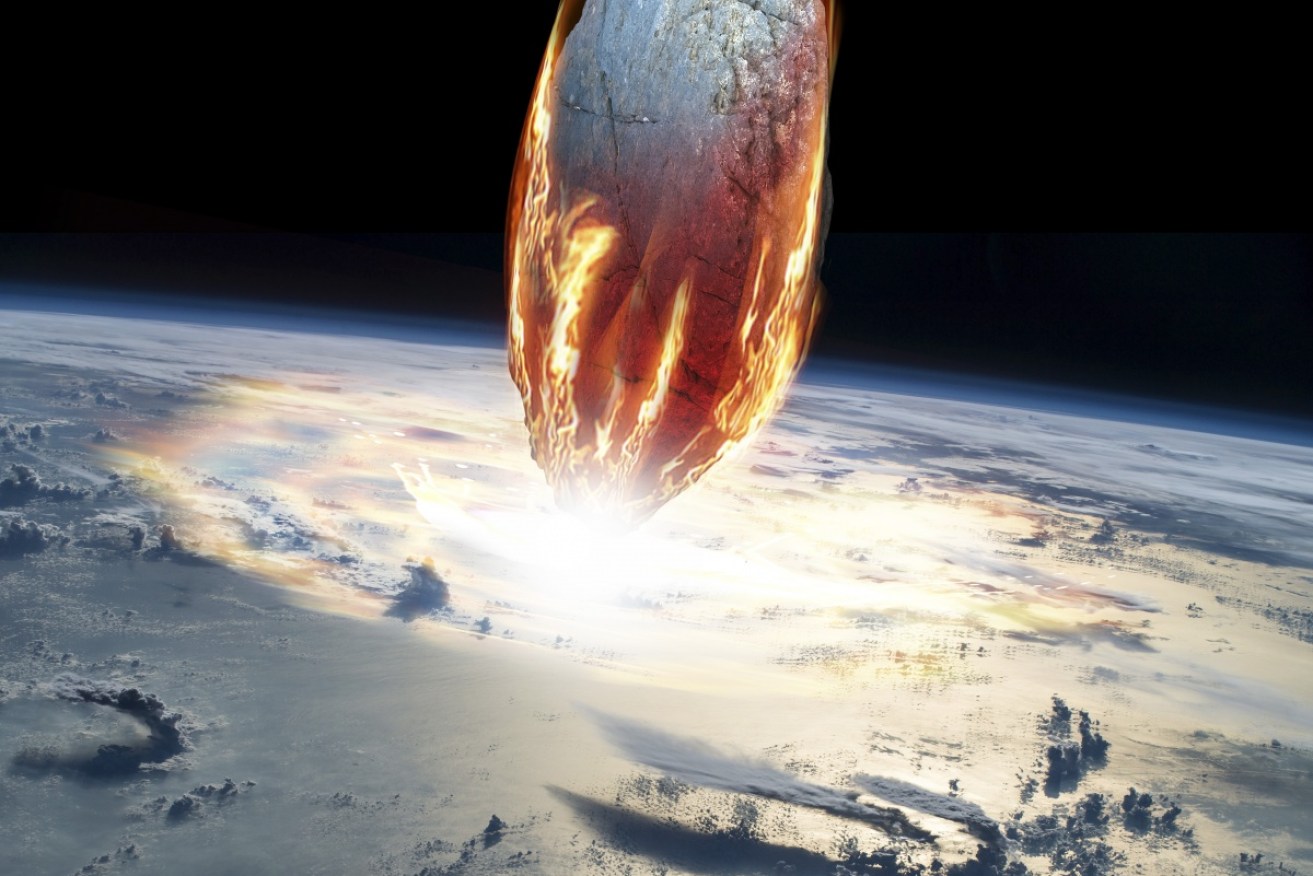NASA prepares to nuke asteroid Bennu, threatening to hit Earth in 2135


An artist's impression of a large asteroid hitting the Earth's atmosphere. Photo: Getty
NASA is making plans to defend our planet with a nuclear device as mammoth asteroid Bennu threatens to collide with Earth in 2135.
Although there is only a small chance the asteroid will hit our globe, NASA’s astrophysicists are investigating ways to nudge the primitive rock off its destructive path by using a nuclear device, a NASA aerospace engineer told The Washington Post.
The asteroid, named 101955 Bennu, is about 500 metres across – almost as wide as New York City’s Empire State Building is tall – and could hit the planet in a celestial act of obliteration, returning human civilisation to the stone age.
However, Bennu pales in comparison with the size of the 15-kilometre-wide asteroid that led to the demise of the dinosaurs about 66 million years ago.
The proximity of Bennu prompted NASA to devise a plan called the Hypervelocity Asteroid Mitigation Mission for Emergency Response, or HAMMER.

The asteroid Bennu compared to international landmarks, The Empire State Building and Eiffel Tower.
But NASA aerospace engineer Brent Barbee, who helped author the scheme, told The Post the exercise may not have a practical application.
“We’re doing these design studies to prepare ourselves so if we do find a threatening object, we’re better prepared to deal with it,” Mr Barbee said.
The odds of Bennu hitting our planet are about 1 in 2700 and although the asteroid is as big as a skyscraper, it is incapable of shattering the planet, experts say.
But for humans and all other terrestrial lifeforms it would be very bad news indeed.
Curtin University associate professor Fred Jourdan, who analysed fragments from the asteroid Itokawa gathered by Japan’s Hayabusa explorer, told The New Daily research into the composition and age of asteroids helped scientists understand how solar systems were formed and potential actions to mitigate asteroid collisions with Earth.
Associate Professor Jourdan said it was important for scientists to understand, for example, if an asteroid was a “giant rock” or a “rubble pile” bound by gravity, when considering how to mitigate an asteroid.
“If a rock is solid, you can blow that up, and I’m not saying that’s the solution. But if it’s a pile of rocks, you can’t explode it,” he said.
“It would react like a firecracker in sand; it just sticks together, absorbing the shock like a cushion. Nothing would happen.”
The asteroid researcher stressed there was a “very low probability” of the asteroid Bennu hitting Earth, likening it to the chance of winning the lottery.
“It would be a blip for Earth, the Earth wouldn’t shatter, but it’s what’s on top of the Earth, the matter in the biosphere, that would not be okay. We’d be sent back to a stone-age existence.”
NASA’s spacecraft OSIRIS-REx has been cruising towards the asteroid of Bennu for two years and is due to arrive on the “well-studied roughly spherical body” in December 2018.
Instead of ‘nuking’ the asteroid, OSIRIS-REx Flight dynamics system manager Michael Moreau told Gizmodo painting the surface of Bennu could divert the asteroid’s orbit.
“Even just painting the surface, a different colour on one half would change the thermal properties and change its orbit,” he said.
The OSIRIS-REx spacecraft mission will survey the surface and collect a sample of the rare B-type, carbon-rich asteroid, which is expected to have organic compounds and water-bearing minerals like clays.
NASA says “primitive” asteroids like Bennu have not changed significantly since they formed nearly 4.5 billion years ago.
“Because of this, we hope to find organic molecules on Bennu like those that may have led to the origin of life on Earth,” NASA’s OSIRIS-REx website said.
The OSIRIS-REx mission is a seven-year-journey to rendezvous, study and return samples of Bennu to Earth.
The spacecraft was first launched on September 8, 2016.








